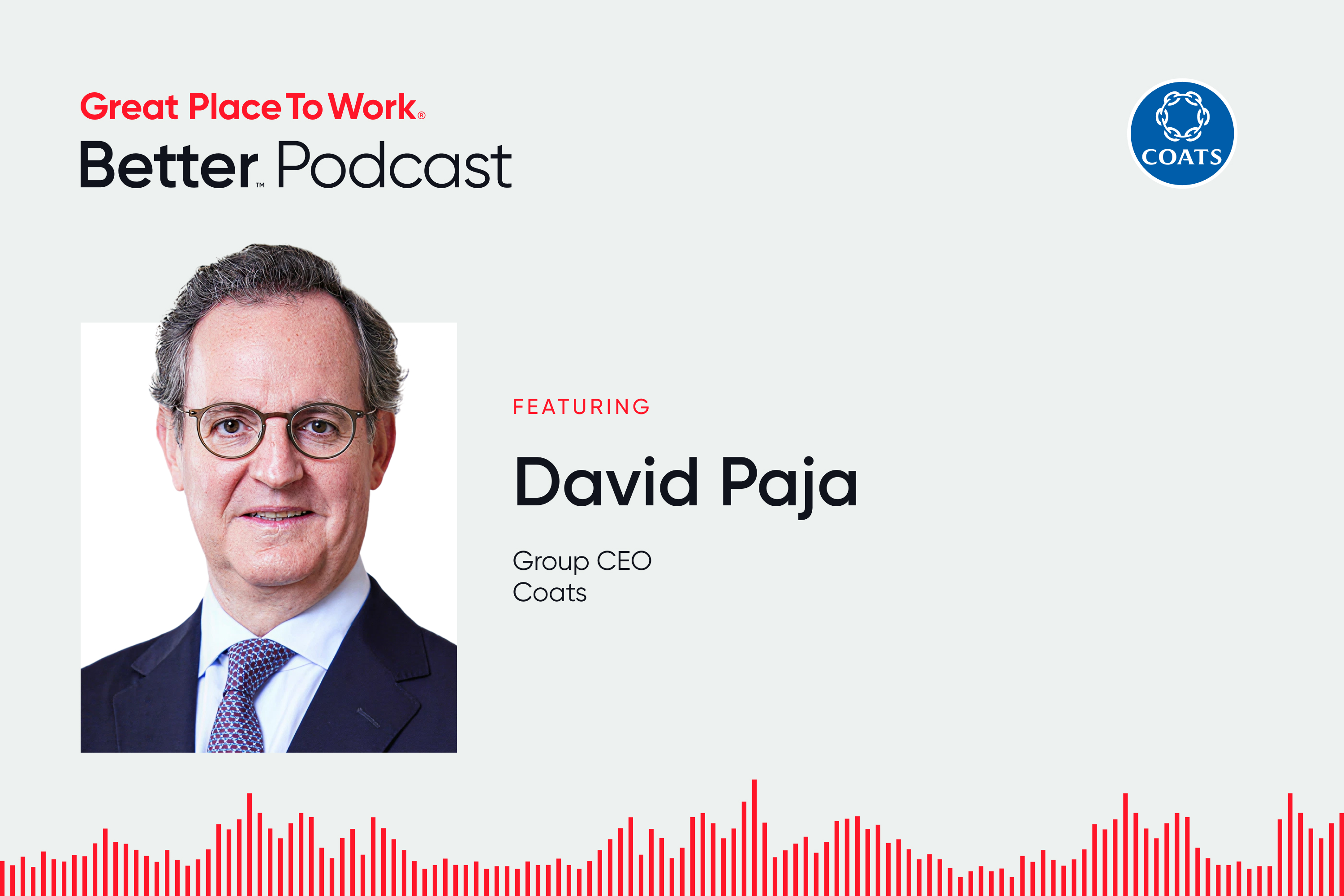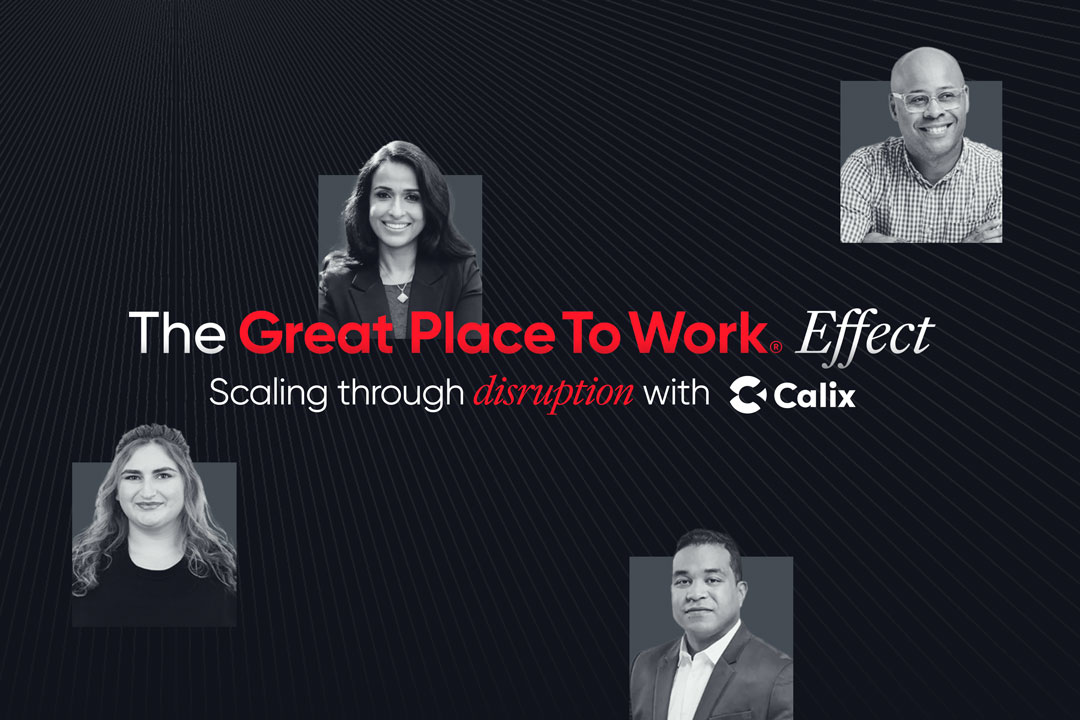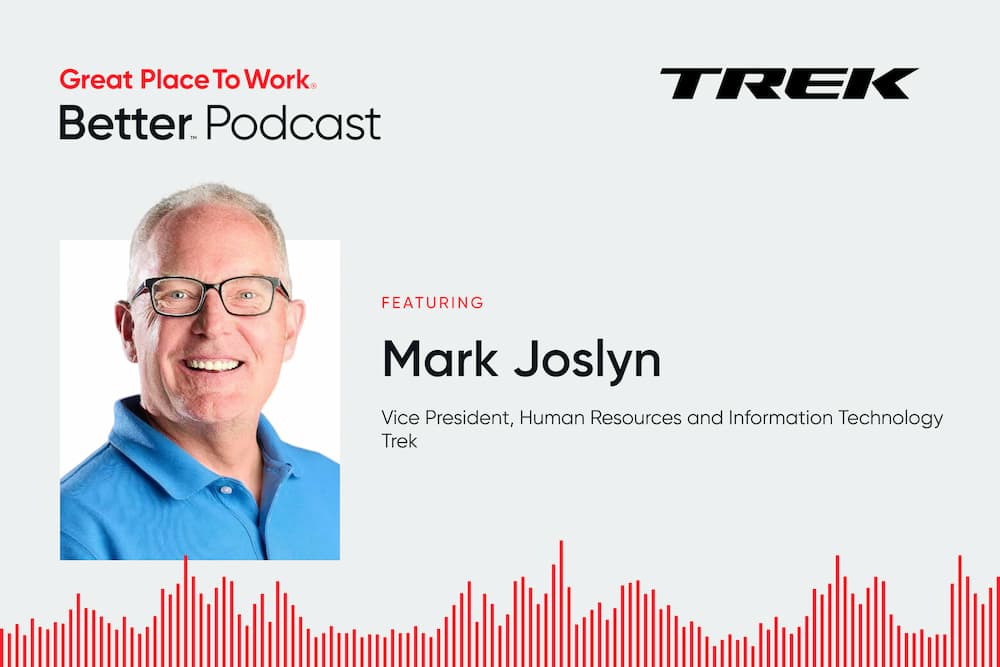Here’s what companies at the Best Workplaces in the country told us are at the top of their to-do lists.
Where are you investing this year?
Perhaps AI training and tools are at the top of your list. Maybe you are focusing on improving executive communication or retooling your employee listening programs.
It’s a challenging time to try and run a business. Why not take your cue from the Fortune 100 Best Companies to Work For®? They’ve built cultures that are driving remarkable performance — 3.5 times higher stock market performance compared to the Russell 1000, for example, and 8.5 times higher revenue per employee.
What are they doing to achieve those gains? In short: They have a culture where employees are faster and more productive in solving the immense challenges of the current business landscape.
What are the top issues facing HR leaders?
HR leaders face a number of critical issues, from plummeting global employee engagement to the urgent need for AI transformation.
Great Place To Work® identified key trends to watch for 2025:
- Global low employee engagement. With only 18% of employees saying they are “extremely satisfied” with their role, per Gallup, your most engaged employees will be more valuable than ever.
- AI upskilling becomes more urgent. If 1 billion people worldwide need to be reskilled by 2030, leaders need to move much more quickly to retrain impacted workers. AI is also upending traditional career paths that need to be reexamined.
- Financial wellness becomes more elusive. In the U.S., employees are increasingly concerned about the economy. Uncertainty will keep financial security a top issue this year.
- Gen Z’s rising influence. For the global workforce, the rise of Gen Z makes demographic change an important piece of the puzzle for leaders in every market.
For HR leaders, these challenges are mixed in with the changing face of the profession.
What does the future of HR look like?
Where traditional HR roles might have focused on recruitment or the onboarding process, managed compliance, or promoted siloed initiatives, today’s HR is becoming an “all of the above” discipline.
HR leaders must embrace roles as innovation champions, shepherding the organization into the AI era. They must become strategic counselors to the leadership team and take responsibility for change management.
The most effective HR leaders will have their own platform, rooted in the purpose of the organization, with a direct line to business performance and key operational outcomes.
Why you should invest more in HR priorities in this market
Too often, HR is seen as a cost driver for the business. However, in an uncertain market, investing in people can insulate an organization from the turmoil of the broader economy.
Great Place To Work research found that companies with more inclusive cultures — where frontline employees, women, minorities, and long-tenured employees were having a better experience — were less likely to suffer losses during the 2008 financial crisis.
Not only did 69 “thriving” companies avoid the 35.5% loss of the S&P 500 from 2007 to 2009, but they also posted a 14.4% gain.
With mounting signs of disruption and turmoil thanks to AI and falling employee well-being, now is the right time to reinvest in the employee experience and build trust.
What can be learned from the Fortune 100 Best Companies
The Fortune 100 Best is a remarkable list — representing a range of industries from tech and finance to retail and hospitality — and their example offers important lessons for leaders of any company.
At the heart of the matter is trust. These companies have developed relationships with their workers that allow employees to take better risks, lean into change and transformation, and do their best work even in the most trying conditions.
Here’s how these companies focused their efforts to build a stronger culture this year:
1. Future-proofing the workforce with AI training
IBM estimated that as much as 40% of your workforce might need retraining to meet the demands of an AI-enabled economy. What does it look like to do this effectively?
At HP, employees are offered hands-on training to familiarize themselves with AI tools. At Mastercard, employees can take advantage of a curated suite of AI resources, in partnership with LinkedIn Learning, to explore the basics as well as more advanced topics like machine learning.
At Salesforce, employees can take instructor-led AI courses free of charge, an investment it estimates at $50 million. Employees also have quarterly AI learning days where they can take time to build their knowledge and skills. Employees can also take advantage of the company’s career marketplace to identify new experiences within the company to test and develop their AI savvy.
Check out our report on the best practices driving AI adoption and exploration.
2. Leader and management development
The 100 Best are also heavily invested in developing leaders. Leaders bear a heavy responsibility for the employee experience, with research showing that they can have an even bigger impact on workers’ mental health than their health care providers.
Great Place To Work has found that key leadership behaviors build the trust that fuels the performance of the 100 Best. Without leaders who demonstrate these behaviors, the companies on the list might look very different.
To develop and enable their leaders, the top 200 leaders at Elevance Health receive 360-degree assessments and have access to resources like an executive learning series and a sponsorship program.
At Hilton, team members can access a People Leader Essentials curriculum, a self-paced program aimed at strengthening key leadership skills essential for first-time managers and people leaders, including decision making, effective communication, giving feedback, delegation and prioritization, coaching, talent development, and inclusion and wellness.
At PulteGroup, a “Leadership Academy” develops leaders with LinkedIn Learning resources and customized development guides.
3. Upskilling and retraining employees
Learning and development are a focus for every level of the organization, not just leaders.
At Atlassian, an enhanced performance review process is helping shape a culture of high performance, clarity, and continuous growth. By aligning expectations between employees and managers, and equipping leaders with AI-powered tools, we're making performance conversations more meaningful and actionable — supporting long-term development across the company. At Camden Property Trust, an expanded mentor program will help employees learn new skills and connect with leaders across the organization.
At Tri Pointe Homes, the team is rolling out a new competency model to ensure employees develop the skills that lead to key business outcomes. Essential employee experiences from onboarding to annual reviews will be updated to fit the new competency model and ensure alignment for every employee.
4. Employee well-being
Many of the companies on the 100 Best list are increasing their investments in well-being. With well-being faltering across the U.S., companies that can offer a better experience have the opportunity to leapfrog their competitors.
Some companies are focused on addressing burnout and work-life balance. At Bank of America, a sabbatical is offered to long-tenured employees. By the end of 2024, nearly 21,000 team members took four to six weeks of paid leave to recharge and refocus.
Others are focused on targeted opportunities to improve health care access. At Hilton, increased resources for team members impacted by a cancer diagnosis are a focus in 2025. At The Breakers Palm Beach, wellness initiatives include on-site mobile services like mammography, dental care, and a newly added vision screening.
5. Increase levels of belonging and inclusion across the organization
Companies on the 100 Best list see a benefit in improving inclusion and acceptance in their organizations, and are doubling down on programs like employee resource groups (ERGs).
Companies like Encore are connecting their resource groups to core values like their commitment to value people. At DHL Express, a commitment to community engagement and environmental responsibility is reflected in its “Go Committees.” Led by employee chairs and vice chairs, these committees empower employees and expand nationwide participation, enabling DHL to make a greater impact for communities and the environment with over 2000 volunteering hours and 1200 volunteers.
Cadence is continuing its work to broaden the talent pipeline with its fem.ai initiative. “Opportunity for all is a competitive advantage to get the best talent,” shared Anirudh Devgan, CEO at Cadence at the 2025 For All Summit. “If we build a culture where we attract the best people, we will perform better for our customers.”
6. Offer more flexibility to employees
There’s more to flexible work than remote work policies.
Flexible work can include unconventional solutions like a four-day workweek, or more incremental steps that allow employees to meet their responsibilities outside the workplace.
At Edward Jones, flexibility means allowing their financial advisors to determine how they will run their practice. At Box, empowering employees to be flexible means giving leaders the tools to effectively manage performance across the organization. The tech leader is launching leadership dashboards to help leaders make better decisions and drive team success in a hybrid work model.
At TP, increasing flexibility meant finding lower-cost medical insurance plans, enhancing voluntary benefits offerings and simplifying attendance policies. Why are benefits an important part of the discussion around flexible work? Things like a four-day workweek can have unintended consequences on other benefits.
7. Build a stronger sense of community for all employees
In an era where loneliness is on the rise, some of the 100 Best are reinvesting to help employees find more connection with their colleagues.
At Pinnacle Financial Partners, associates are encouraged to get to know one another outside work with activities like 15-minute walks with a new colleague, or an art project activity where Pinnacle provides supplies, food, and an instructor. People can also connect during wellness events like the Pinnacle 5K or through volunteering opportunities.
At Power Home Remodeling, employees can connect at a year-end retreat in Mexico with music performances and more. Other events where employees can connect include leadership conferences and team-building off-sites, sporting events, and more.
8. Change management
Managing transformation is a top concern for all companies. At the 100 Best, this involves taking a close look at employee listening strategies.
At Elevance Health, an enhanced listening strategy involves both refining the channels for receiving employee feedback and bolstering action plans to ensure the organization effectively responds to feedback. The financial services firm Ryan is focusing its annual culture workshops this year on breaking down foundational elements like trust and exploring how colleagues can process disagreements and conflict — key abilities in a fast-paced work environment.
9. Investing in technology
The 100 Best are also investing in new tools to allow them to better meet the needs of their workforce and the business as a whole.
Protiviti has introduced an employee experience app that gathers and shares employee-submitted insights with leaders in real time, enabling them to quickly respond. Bank of America is investing in new technology like AI and VR to improve learning and development programs with immersive experiences.
And every company on this list is taking advantage of listening technology, including Great Place To Work’s Trust Index™ Survey.
Discover opportunities for your people strategy with Great Place To Work
Which of these priorities is the most relevant for your organization?
Get the answer by asking your people. Use Great Place To Work to find opportunities for your company and benchmark your culture against leaders like the 100 Best.
Explore our proprietary platform today.








